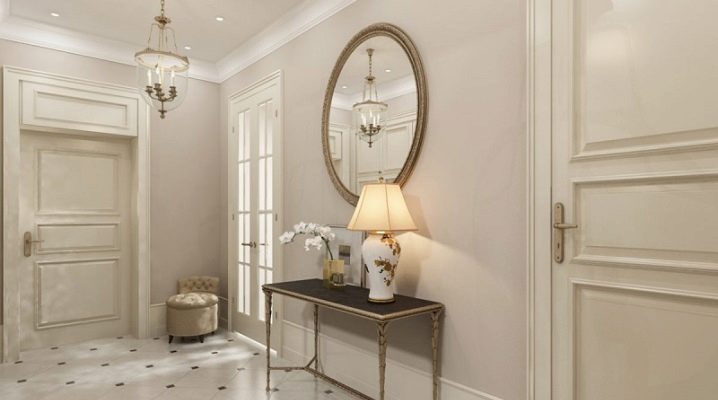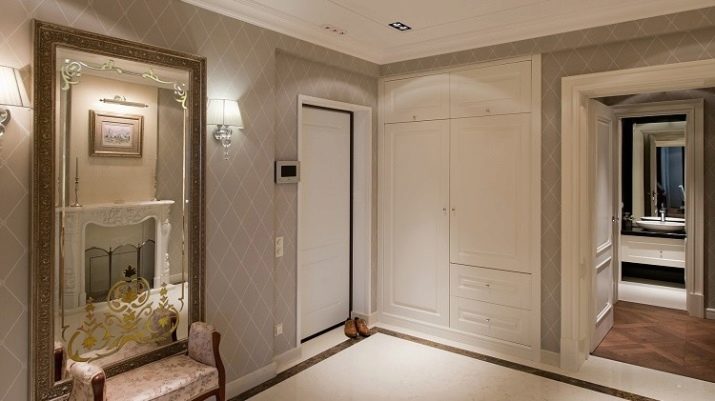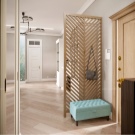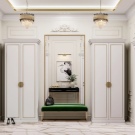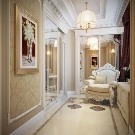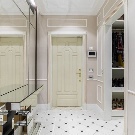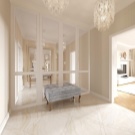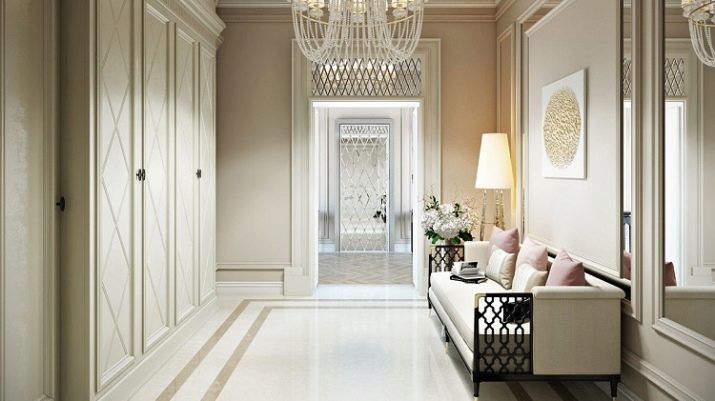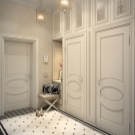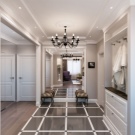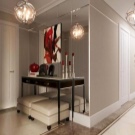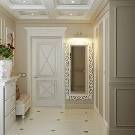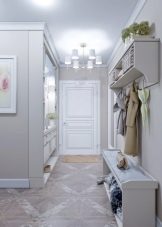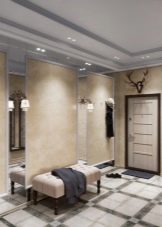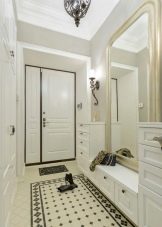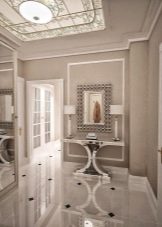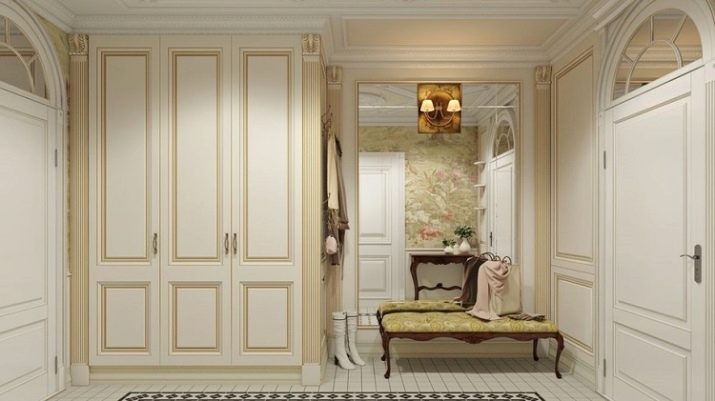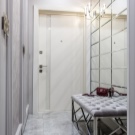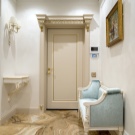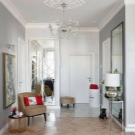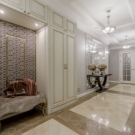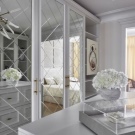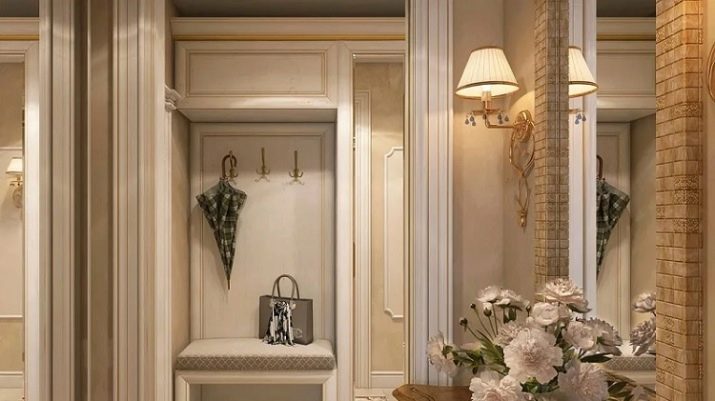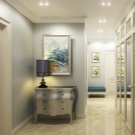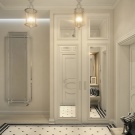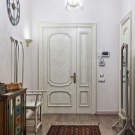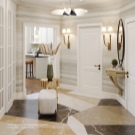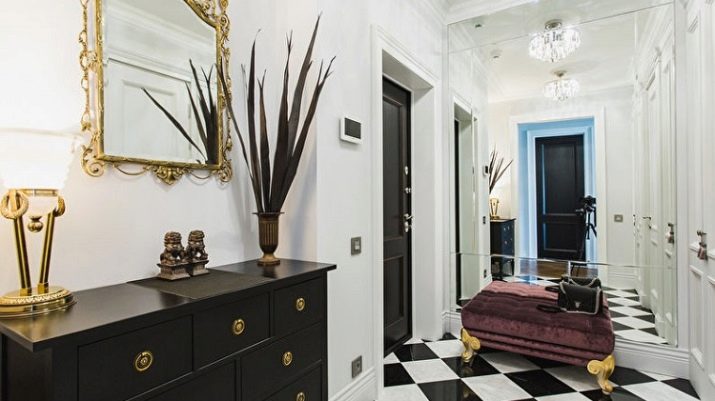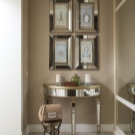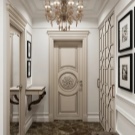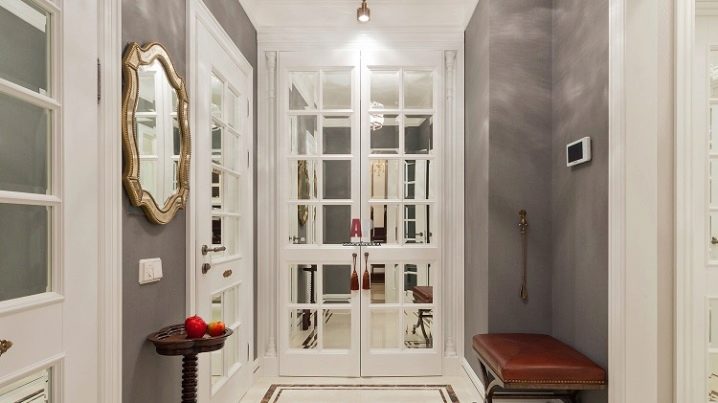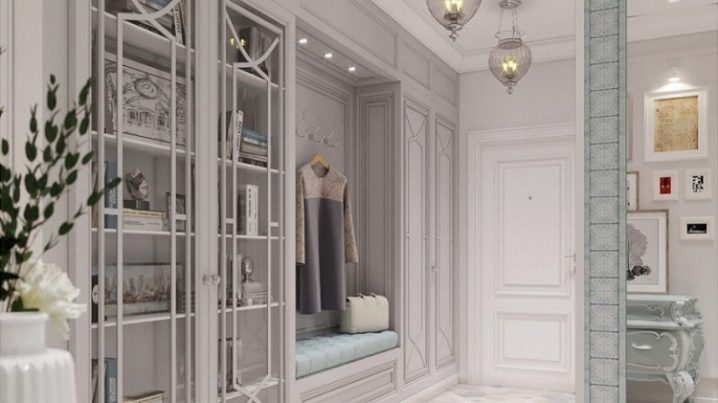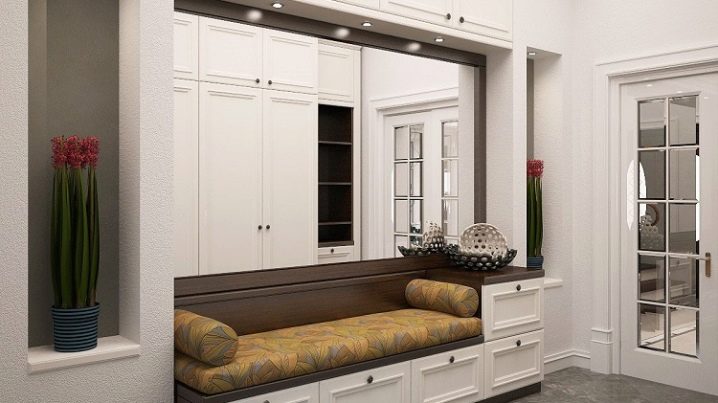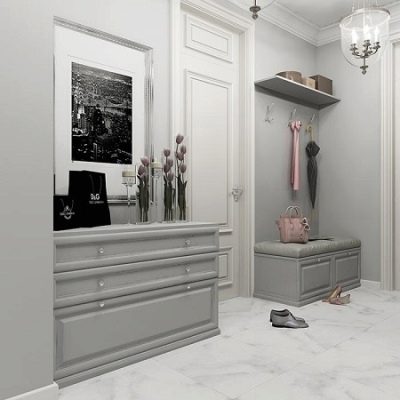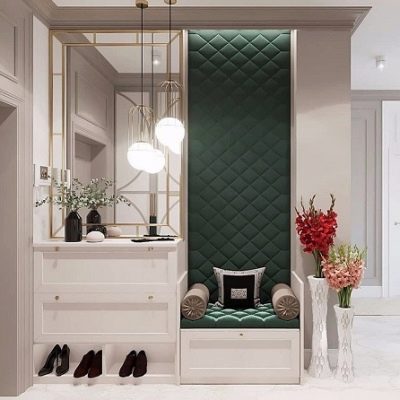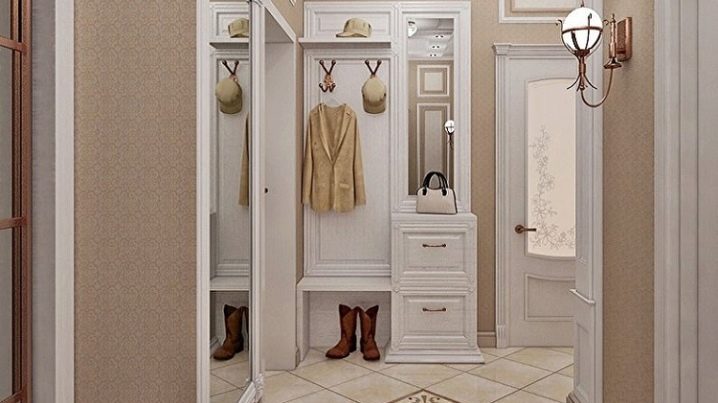Neoclassical hallway
Neoclassicism is a style that will suit people who value traditions, but do not reject interior and technological innovations... This is a way to stay modern without compromising on ideals that have been found and shaped long ago. If the apartment is made in this style, every room must obey it, and the hallway too.
Peculiarities
The main sign of neoclassicism is a sense of proportion... There is no room for frills, there are many natural colors and decorative details drawn from the classic style. That is, stucco moldings, mirrors, borders. It is not for nothing that neoclassicism is called the union of symmetry, simplicity of forms and elegance of lines. At the same time, the appearance of the room looks expensive, but not due to conspicuous textures, colors, objects, but due to their elegant simplicity and brevity.
The design of this style assumes:
- the use of natural motives;
- preference for natural materials;
- a sense of proportion, accuracy in the choice of each interior touch;
- the ability to use high-quality imitation of expensive natural materials.
This style differs from the classical one primarily in the signs of the times. In the classics, a plasma TV could not appear, because it was not corny. Neoclassicism treats good technology, quality and comfort of modern life with reverence.
In the corridor and hallway, neoclassicism is both easy and difficult to create at the same time. Easy, because a priori this room does not need to be burdened with objects. Even if it is empty, it will not make it poorer. It is difficult, because with a small number of items, and even often at a small footage, you need to recreate the style, make it recognizable.
A dwelling begins with a hallway, which means that whoever enters the house must meet neoclassicism right from the doorway.
Finishing methods
Walls are most often covered with wallpaper; painting is also acceptable. If the hallway is small, then only light wallpapers are selected. Cream, blue, faded lemon, pistachio, dusty rose, powdery - these shades will be a win-win. The floors are usually covered with a light board, the ceilings are painted white with the addition of stucco molding, but delicate, discreet. Doorways can be decorated with pilasters, but this is not strictly necessary.
One of the actual colors of the season - light gray... Moreover, it has many shades with which you can experiment. In one space, it is permissible to use transitional colors: for example, asphalt gray and gray-brown. Subtle transitions will create a beneficial visual experience. Such color designs distract attention from the small footage of the hallway. Of course, they do not forget about mirrors and mirror surfaces, the main "expanders" of space.
Furniture selection
Furniture must be elegant, graceful... It is not up to the most laconic and minimalistic forms here. This does not mean that you need to turn to very massive, bulky models, it only means that too simple, decorative, impoverished designs will break stylistic harmony. The color of the furniture should match the finish. That is, if the hallway is light, it is unlikely that solid mahogany furniture will be appropriate in it. It is used in hallways, but not the smallest ones, and with a finish that is consonant with rich mahogany.
Furniture Canon - symmetry... The modular row in the hallway, if there is one, should not "break off", it should have a symmetrical beginning and end, like a looped furniture story.If you cannot find such a set or it is expensive, you can abandon it by making an elegant built-in wardrobe, or put one elegant instead of a row of wardrobes, and then continue the composition with an elegant hanger, bench and console with a mirror in a beautiful frame. Everything should be functional.
If there is a chest of drawers, a table, a console, a curbstone in the hallway, the tabletop should not be empty and dusty. There can be a beautiful lamp or a decorative seasonal or festive composition - for example, with candles, a vase.
Lighting and decor elements
Neoclassical style adds recessed light sources to traditional wall sconces and fixtures... Many designers compare them to ancient Greek light wells. The parallel is obvious: in a hot climate, one wanted to hide from the heat behind massive stone walls.
The central rooms of the house were ideal for this: there were no windows, but in order for the sun to enter the house, they left space in the ceiling. Since the opening had the shape of a well, the rays did not penetrate down - the ceiling itself shone from the diffused light. Recessed luminaires create a very similar effect.
Floor lamps and sconces are designed to illuminate functional areas... Sconces in a neoclassical living room are more appropriate, since they fully meet the request - to light up a mirror, for example. The floor lamp usually stands next to the armchair, where they sit down for reading or drinking coffee. Decor and accessories in style are required, but rather succinctly selected. They only set the mood in the room, but do not dictate it, do not take all the attention. Otherwise, the style can slip into pretentiousness, which "eats" it.
Figurines, mirrors, paintings, vases - the most important decorative row... Stucco molding on the walls, quite acceptable in neoclassicism, is also a decor. Not a single place in the hallway should be oversaturated with it.
Examples in the interior
Beautiful hallways make the guest more loyal to the house, its furnishings and even to the owners. The charm of the neoclassical hallways.
- This space is not the largest, but such a hallway cannot be called frankly small.... A large mirror only adds to the visual sense of the space; the decision to put a bench-sofa to it turns out to be unexpected.
In order not to weigh down the footage, instead of a standard chest of drawers, a through construction was chosen, the bottom of which is charmingly utilitarian.
- Mirrored doors are a great design move... He will always make the space look bigger than it is. Plus it adds elegance and neatness to the room. Everything is emphasized decoratively, but because of the small forms it is not redundant.
- A massive mirror, not attached to the wall, but standing by her, is one of the fashionable "tricks" of neoclassicism... This is not always appropriate, but here there is no particular narrowness of the hallway, therefore it is permissible. Those who do not want white or beige everywhere may like such a coloristic solution.
- A display cabinet in the hallway is not common. At the same time, this hallway can continue with a corridor, and sometimes it becomes a place where such furniture is taken out.
Everything is perfect in colors, as well as in the restraint and elegance of the decor - nothing superfluous.
- And dreams of mirrored doors, and again utilitarianism, which is "disguised" as decorative... The wall has become both a platform for organizing spacious storage areas and an opportunity to put a sofa, albeit so special.
- Gray is not boring, it is soothing, soft, pleasant... It creates a sense of relaxation, which should inevitably envelop a person who comes home from work.
- Due to the appropriate and seasonal decor, the room will always be smart and stylish. Although, in general, all his solutions are quite simple and affordable.
- A narrow hallway should not seem cramped, which is what the owners want, and that they do not always succeed... In this case, the design of the floor, and the white edging of the walls, and the choice of furniture contribute to this - the comfort and organization do not allow the hallway to feel like a cramped place.
- Deven simple, not very expensive, affordable furniture coupled with the right finish can form neoclassicism in the hallway.
- If someone doesn't like a lot of light and a lot of white in the welcome area at home, there is one cozy, subdued option.
